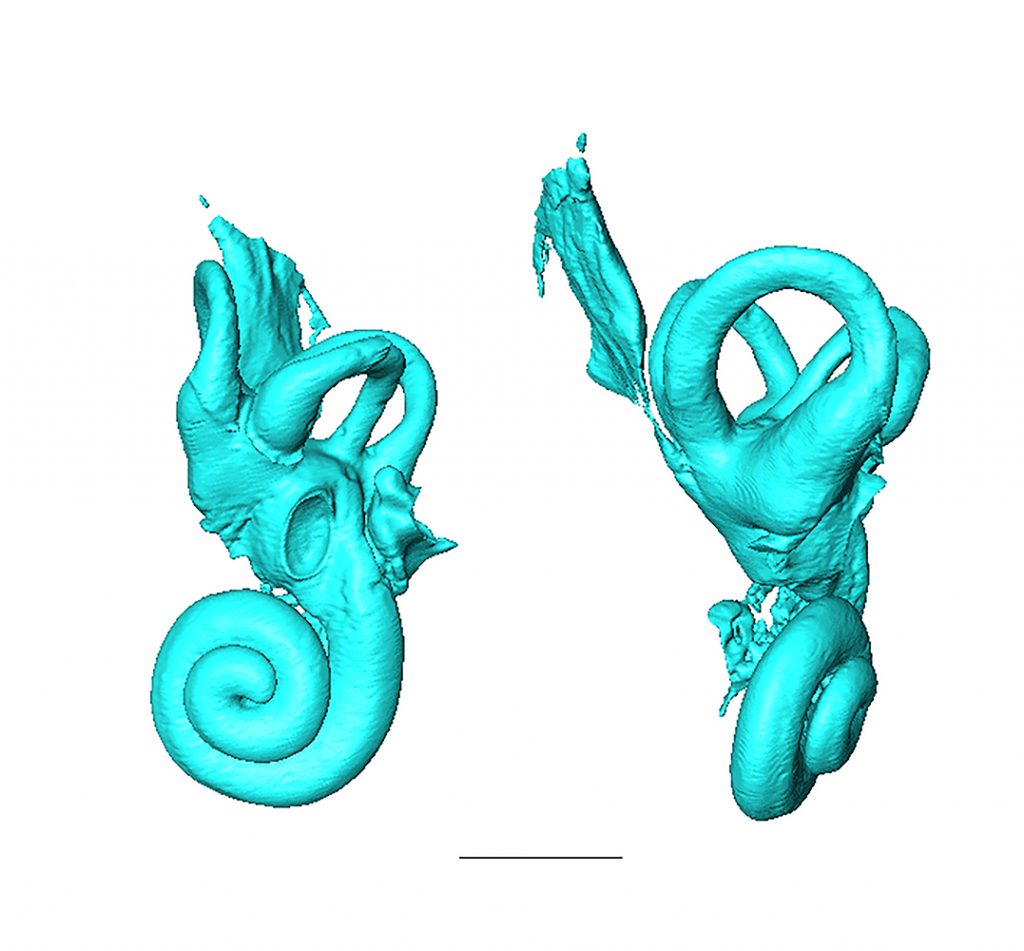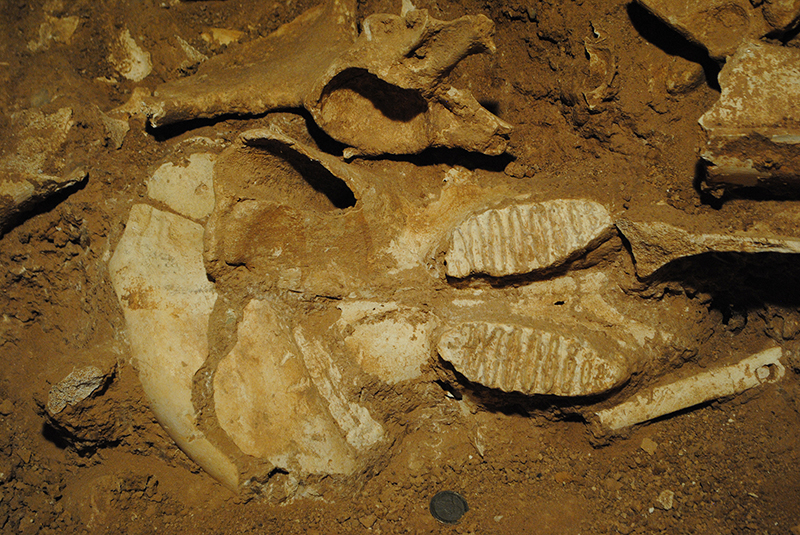Small Elephant Heard Deep Sounds
Zoologische Staatssammlung München
The extinct dwarf elephant Palaeoloxodon tiliensis from the Greek island of Tilos seemingly possessed a similar hearing range to its larger relatives living today. Like them, it would hear in low frequency ranges. SNSB zoologist Anneke van Heteren, together with scientists from the National University and the Kapodistrias University of Athens, was able to map the structures in the inner ear of the dwarf elephant using micro-computed tomography analyses. The researchers have now published their results in the journal Palaeontologia Electronica.
Today’s elephants communicate in a very low frequency range. This means that they produce and hear sounds so low that we humans cannot perceive them with our ears. Researchers from Germany and Greece have now shown that the dwarf elephant Palaeoloxodon tiliensis from the Greek island of Tilos, which became extinct around 3,500 years ago, apparently had a very similar hearing range to its present-day relatives. It appears that the small Tilos elephant also perceived very low-pitched sounds. Researchers were able to determine this by examining the shape and size of the so-called bony labyrinth, a complex canal system in the inner ear.
The inner ear of a mammal houses its sense of hearing as well as balance and lies embedded and well protected in the so-called petrous bone – the hardest bone of a mammalian skeleton. The structures – the bony labyrinth – are not visible from the outside and are therefore difficult to study. Researchers from the Zoologische Staatssammlung München (SNSB-ZSM) and the National and Kapodistrias University of Athens used a high-resolution micro-computed tomography device to make these hidden structures visible.
Anneke van Heteren, curator for mammals at the ZSM, and her Greek colleagues were able to portray a three-dimensional image of the bony labyrinth using micro-CT-scans without damaging the temporal bone. The analysis of these structures not only allowed the scientists to assess the animal’s hearing, but also its ability to move its head and maintain balance. Evidently the motility features of Palaeoloxodon tiliensis are comparable to those of today’s elephants. It would seem that it moved rather clumsily.
In principle, the shape of the bony labyrinth in mammals is species-specific, which means that it varies from species to species. This did not escape the scientists when comparing the inner ear structures of Palaeoloxodon tiliensis to those of other elephant species. “Since the bony labyrinth is difficult to access, there is only very little data on the inner ear structures in elephants. Further micro-CT analyses could provide us with new insights into the evolutionary history and relationships of these animals”, says Anneke van Heteren from the ZSM.
The studied dwarf elephant Palaeoloxodon tiliensis belongs to the last European elephant species and lived on the Greek island of Tilos 3,500 to 45,000 years ago. It is one of several dwarf elephant species of the genus Palaeoloxodon that colonized various islands in the Mediterranean.
Publication:
Liakopoulou, Dionysia E., Theodorou, George E., and van Heteren, Anneke H. 2021. The inner morphology of the petrosal bone of the endemic elephant of Tilos Island, Greece. Palaeontologia Electronica, 24(2):a24. https://doi.org/10.26879/1034
Contact:
Dr. Anneke van Heteren
Zoologische Staatssammlung München (SNSB-ZSM)
Münchhausenstraße 21, 81247 München
Tel.: 015165161715
E-Mail: vanheteren@snsb.de

Mikro-CT-Scans des knöchernen Labyrinths von Palaeoloxodon tiliensis (Foto: Dionysia Liakopoulou) 
Schädelfund des ausgestorbenen Zwergelefanten Palaeoloxodon tiliensis auf der griechischen Insel Tilos. (Foto: Anneke van Heteren, SNSB-ZSM)

